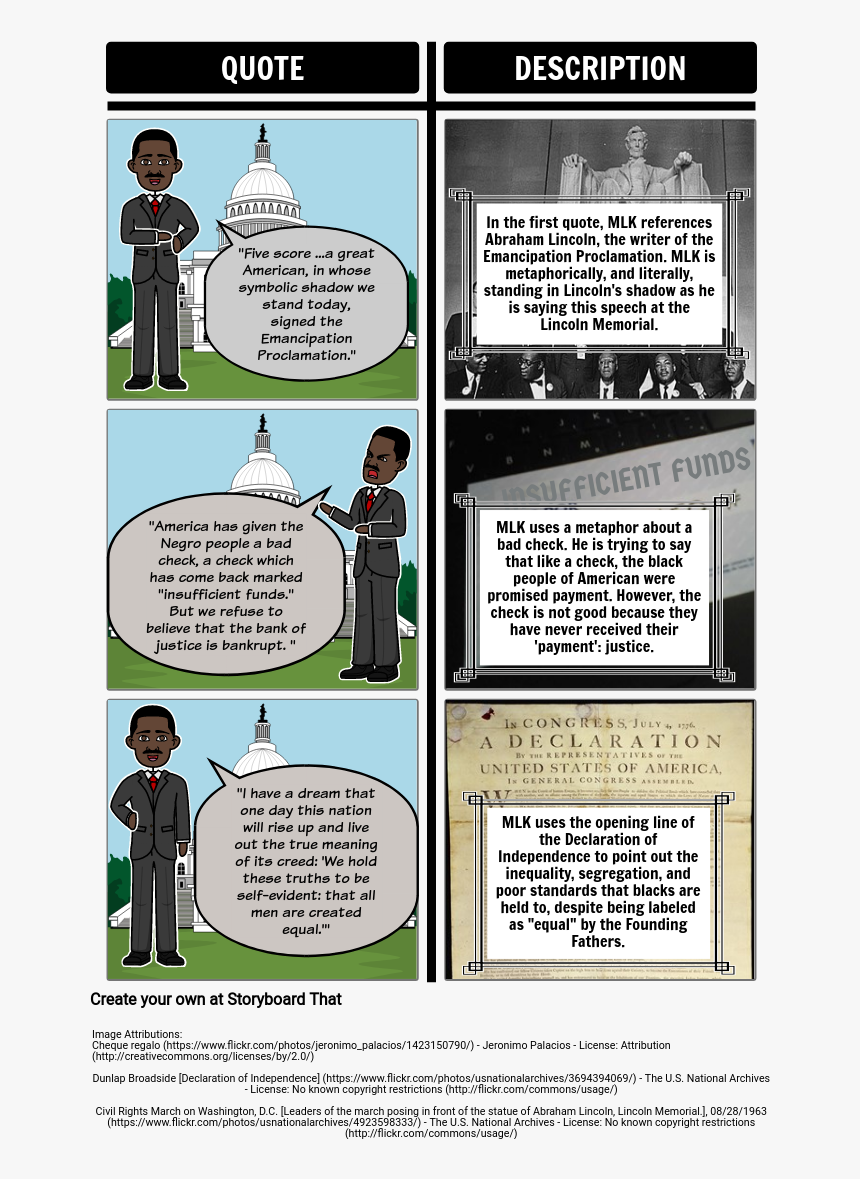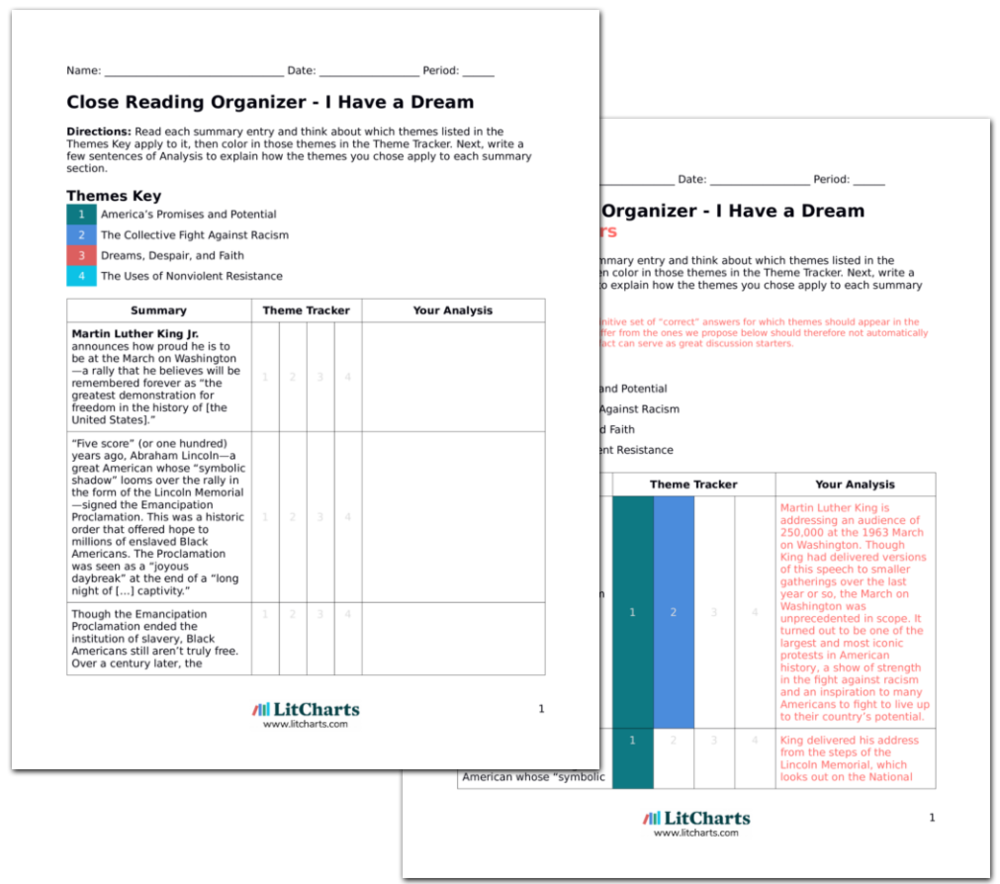The Hidden Meanings – Decoding the Powerful Symbolism Within Martin Luther King Jr.’s “I Have a Dream” Speech

Dreams have always fascinated mankind as windows into the subconscious. Martin Luther King Jr.’s iconic “I Have a Dream” speech, delivered on August 28, 1963, during the March on Washington for Jobs and Freedom, is one such dream – a masterful tapestry of words that captivated a nation and inspired generations.
Instead of analyzing Freudian slip-ups, we embark on a journey to unravel the symbolism in Dr. King’s address. By exploring the metaphors, rhetorical devices, and imagery employed by this civil rights leader, you will gain insights into the power of oratory and an appreciation for the “I Have a Dream” speech.
Don’t miss this article for:
1. Decode the Meanings: We’ll dissect the symbolism hidden within Dr. King’s text, uncovering intricate messages that give you a comprehension of his vision for racial equality and social justice.
2. Unlock the Power of Imagery: Experience Dr. King’s use of vivid language to transport you to the historic scene and immerse you in the emotions.
3. Explore the Freedom Freeway: Analyze the metaphors that illustrate Dr. King’s vision of progress and equality for marginalized communities.
4. Delve into Empathy: Examine Dr. King’s appeals to America’s conscience, combining logic and emotion to create a compelling call for unity in our current societal challenges.
5. “Unleash Inspiration”: By understanding symbolism in this speech, you will derive inspiration to actively contribute to the ongoing quest for justice and equality, both personally and socially. So buckle up, unleash your curiosity, and get ready to unearth the symbolism in Dr. King’s famous “I Have a Dream” speech. Prepare to gain transformative insights that will fuel your understanding of the past and ignite your passion for a brighter future.
The Significance of Dreams: Symbolism in “I Have a Dream” Speech

Martin Luther King Jr.’s speech “I Have a Dream” embodies the importance of dreams in the civil rights movement. Using symbolism, King inspires his audience. The dream itself is a powerful symbol, mentioned multiple times to represent the African-American community’s aspirations for a better future. King conveys that their fight for equality is a collective vision of hope capable of inducing social change.
Another symbol used in the speech is the sunlight of justice. King spoke of wanting to see the day when “justice rolls down like waters and righteousness like a mighty stream.” This metaphor symbolizes achieving justice and equality for all, where justice flows freely like a force of nature.
The mention of the mountain is another symbol of the African-American struggle. King tells his audience about the mountain of despair they have been climbing and their hope for reaching the mountaintop of freedom. This allusion signifies the obstacles faced and the perseverance and courage required to overcome them.
The symbolism of children in “I Have a Dream” speech is significant. King hopes for his own children to live in a nation where they will not be judged by the color of their skin but by the content of their character. The inclusion of children as a symbol represents the future generation and the importance of creating a society in which they can grow without hinderance by racial discrimination.
The “I Have a Dream” speech is rich in symbolic language that speaks to the importance and power of dreams in the struggle for equality. Through these symbols, Martin Luther King Jr. effectively communicates his vision, igniting hope and inspiring action in the pursuit of civil rights for all.
Common Dreams in the Fight for Equality

The “I Have a Dream” speech by Martin Luther King Jr. resonates with people from all walks of life due to its deep levels of symbolism. King united Americans in a shared vision of racial equality through powerful words and imagery.
In one section of the speech, King refers to the “manacles of segregation” and the “chains of discrimination.” These symbols represent the oppression and bondage experienced by black Americans at the time. By utilizing these symbols, King creates a clear image of the injustices faced by African Americans, appealing to the universal desire for freedom and equal rights.
Another symbol in the speech is the “promissory note.” King compares the Constitution and Declaration of Independence to a check promising the “unalienable rights of life, liberty, and the pursuit of happiness” to all Americans. By reminding the audience of their shared American heritage, King reinforces the idea that the fight for civil rights is not just a racial issue, but a deeply embedded American value.
Symbol|Description
—|—
Manacles of segregation|Represents the oppression and restrictions imposed on black Americans.
Chains of discrimination|Symbolizes the various forms of discrimination faced by African Americans.
Promissory note|Compares the Constitution and Declaration of Independence to a check promising the “unalienable rights of life, liberty, and the pursuit of happiness” to all Americans.
The Constitution and Declaration of Independence promise citizens their rights.
How to Remember Your Dreams

Dreams can provide insight into our subconscious mind, but many people struggle to remember them after waking up. To enhance dream recollection, follow these tips:
1. Keep a dream journal: Place a notebook and pen by your bed. Write down any details, emotions, or images you remember as soon as you wake up. This practice strengthens dream recollection and builds a habit of remembering dreams.
3. Create a calm and soothing sleep environment: Sleeping in a comfortable and quiet area without distractions can help you remember dreams. Keeping a consistent sleep schedule regulates sleep cycles connected to dreaming.
4. Enhance dream recall with visualization: In the morning, relax and visualize the previous night’s dreams. Close your eyes and visualize dream details, emotions, and significant aspects. By replaying the dream in your mind, you strengthen the neural connections related to dream recall.
5. Practice mindfulness and self-awareness: Cultivating mindfulness and self-awareness expands dream memory. Stay present and observe surroundings throughout the day. This practice translates to the unconscious mind, improving lucidity and dream recall.
Remembering dreams is a powerful tool for self-reflection, problem-solving, and self-discovery. By using these tips, you can wake up with a clearer recollection of the inner world of your dreams.
Symbols in the “I Have a Dream” Speech by Martin Luther King Jr.

In Martin Luther King Jr.’s “I Have a Dream” speech, powerful symbols are used to accentuate the message of racial equality and justice. A key symbol in the speech is the dream itself. King utilizes the dream theme to articulate his aspirations for a future without racism and to inspire and unite the audience in the pursuit of that dream. Through frequent incorporation of the word “dream,” King instills hope and fosters motivation in people to strive for a brighter future.
Another symbol in the speech is darkness and light. King contrasts the darkness of racial injustice, violence, and discrimination with the light of freedom, equality, and hope. This imagery creates a vivid picture and emphasizes the need to fight against darkness for a more just society.
The American flag is also important in King’s speech. He refers to it as a symbol of the promise and ideals on which the United States was founded, including freedom and equality. By connecting his fight for civil rights to the values represented by the flag, King appeals to the patriotic sentiments of his audience and reminds them of the shared responsibility to overcome racial injustice and uphold the country’s ideals.
Finally, the image of the mountainous terrain represents the obstacles that needed to be overcome in the fight for equality. King speaks about the challenges and hardships African Americans have faced, comparing them to valleys and hills, and how they continue to stand strong and persevere in their struggle for justice. This symbol reinforces the idea that the path to achieving equality is not easy but worth the determination.
In conclusion, Martin Luther King Jr. effectively integrates symbols into his “I Have a Dream” speech to reinforce the message of racial equality and justice. By using symbols such as the dream, darkness and light, the American flag, and the mountainous terrain, he creates a memorable and impactful speech that inspires individuals to work towards a more inclusive society.
The Impact of Dreams on Your Daily Life
Did you know that your dreams impact your daily life? They are more than just images that play out while you sleep – they can inspire and guide you. By reflecting on their symbolism and meaning, you can gain valuable insights that transform the way you approach life.
In this article, we explored the significance of dreams and how they affect your thoughts, emotions, and actions. We discussed how dreams uncover desires, represent unresolved issues, and serve as motivation when faced with challenges.
First, we recognized that dreams mirror our subconscious and reveal our innermost desires. They provide insight into our personality and suppressed thoughts.
Next, dreams have the power to transform us. By embracing the messages and symbols in our dreams, we can find clarity, inspiration, and solutions to our daily obstacles.
Dreams also heal. They act as a catalyst for emotional and psychological growth. Reflecting on our dream emotions and experiences helps address unresolved issues and promotes healing.
Lastly, we learned how dreams fuel our aspirations. By tapping into our sleep visions and goals, we find renewed motivation, set clearer intentions, and work towards turning dreams into reality.
So, how can you apply these insights to your life? Reflect on your dreams, paying attention to recurring themes, symbols, and emotions they evoke. Keep a dream journal to record and analyze patterns. Engage in interpretation exercises, meditation, or therapy to uncover meanings and messages in your dreams.
By understanding yourself and using the power of your dreams, you can make positive changes. Your dreams are more than just fantasies; they offer insight into your soul. Embrace and explore them to shape your life.
Will you join us on this journey of self-discovery and empowerment through dreams? Share your thoughts, experiences, and insights in the comments below, as we delve into the impact of dreams on our lives.


